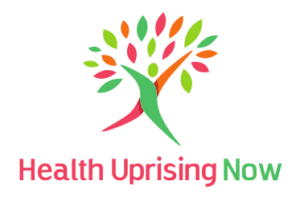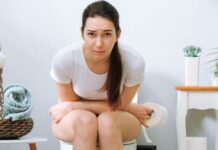Whether you’re traveling with low back pain, knee pain or joint pain, chronic pain can take the joy out of traveling. However, with some careful planning and preparation, you can still enjoy your trip without compromising your health. Explore these helpful tips for overcoming the challenges of traveling with chronic pain.
This post contains affiliate links. If you make a purchase through a link, I may receive a small commission, at no cost to you.
When I went to Barbados a few years ago, I was nursing a torn meniscus in my left knee. I had managed to dodge knee surgery for years. Now the pain was approaching mission critical. Two weeks before departure, I paid my doctor a visit. I was good to go (more on that later).
When I arrived at my hotel, the location was amazing. The view, impeccable. But my knee….not so good. My room was on the third floor…and there was no elevator.

Table of Contents
Consider Your Pain Levels When Planning Your Travel Destination
When planning your trip, it’s important to consider your level of pain. Obviously, I hadn’t done my homework. But where you travel is just as important as where you lodge.
Here are some things to consider when selecting a travel destination with chronic pain.
- Type and accessibility of attractions
- Travel distance
- Distance between lodging and attractions
- Climate
- Altitude
- Access to medical care
Type and accessibility of attractions
Do the attractions require a lot of walking? Are attractions and restrooms wheelchair accessible, if needed? Are there enough places to sit and rest?
This is where making an itinerary beforehand can be helpful. Call attractions in advance with questions. Make reservations when possible to avoid standing in long lines.
Travel distance to your destination
How long can you sit comfortably at home? If your body starts aching after 2 hours, you may want to consider this when planning how far you travel.
Of course you can always factor in breaks to stand and stretch your legs. So you don’t have to necessarily limit your travel time to 2 hours, if that’s how long you can sit comfortably.
But ask yourself, can you realistically travel for (insert number of hours here), even with breaks?
Distance between lodging and attractions
Is your hotel a considerable distance from attractions? If so, is uber service available? Or can the hotel arrange for car service for you?
Climate
Changes in climate can spell trouble for chronic pain sufferers. Cold weather has a way of working its way into the joints, causing pain and stiffness.
Migraine sufferers may experience Increased pain with a drop in barometric pressure. Researchers found that arthritis pain also increases with low barometric pressure.
Increases in barometric pressure can impact those with fibromyalgia and other conditions.
Some people experience pain with increased humidity.
Obviously, no travel destination has perfect weather. Just use your judgment and be mindful of significant differences in climate when planning travel.
Altitude


As mentioned above changes in barometric pressure can affect pain levels. Barometric pressure is closely correlated with altitude. The higher the altitude of a location, the higher above sea level it is. As altitude increases, barometric pressure decreases.
Simply put, if drops in barometric pressure affects your pain levels, higher altitudes may also.
Access to medical care
Most people don’t give access to medical care a second thought. But depending on how serious your medical condition is, it’s worth some consideration.
Should the need arise, travelers can contact the nearest US embassy to locate medical services. They’re available 24 hours a day, every day.
The CDC offers recommendations for getting health care assistance while traveling.
Finding out the proximity of pharmacies and convenience stores in advance is also advisable. Your hotel or lodging may be able to direct you.
Choose the Best Mode of Transportation To Accommodate Your Pain Level
When traveling with chronic pain, choosing the right mode of transportation is key. By selecting the mode of transportation that best suits your needs, you can significantly reduce the amount of physical discomfort experienced during your journey.
Consider factors such as distance traveled, duration of trip, and level of physical activity involved.
Traveling by Plane With Chronic Pain
With over 40,000 airports worldwide, traveling by plane gives you the most options in terms of destinations. You can plan the perfect vacation that suits your needs.
Traveling by plane gets you to your destination quicker than any other mode of transportation. Does that make it the best mode of transportation? That depends.
People tend to only think about the length of the flight. But you should also factor in travel time to and from the airport. The journey to your destination can be segmented into 3 parts:
- From your home to the airport.
- From the airport to your destination.
- From the destination airport to your lodging.
So that quick mode of transportation just got 2-3 hours longer. Maybe more.
You’ll need to stand in line to check in your luggage and go through airport security. When you arrive at your destination, you’ll need to retrieve your luggage.
Airport terminals require a great deal of walking. Terminals can be crowded, and seats at the gate provide little to no comfort.
Cabin space is limited when traveling by plane. Leg room and personal space is scarce. Restrooms are cramped. Aisles are tight, and moving around the cabin is discouraged unless using the restroom.
When traveling by plane, choose a direct flight to minimize the amount of time spent sitting in uncomfortable seats.
You may also want to consider wheelchair assistance if needed.
How to Minimize Painful Symptoms When Traveling By Plane
All national flights are required by law to provide wheelchair assistance. International flights departing from or arriving in the United States are also required. Contact the airline at least 48 hours prior to your flight to arrange for assistance.
When I traveled to Barbados with a torn meniscus, I arranged for wheelchair assistance. There’s no way I could have ever walked through the airport terminal without it.
I rode in comfort from the moment I checked in, until I reached the gate. From there I was guided down the ramp and onto the plane, where I got up and walked in. The wheelchair was folded up and placed on the plane.
When I reached my destination, the wheelchair was waiting for me.
Does flying increase inflammation?


Take advantage of airport lounges before and between flights. Lounges provide comfortable, spacious seating, food and drink, and respite from chaotic airport terminals.
Be sure to get up and walk around the plane at least once every hour. This will help improve circulation and prevent stiffness in your muscles and joints.
How to Expedite Airport Security Screening
You can expedite airport security screening with TSA PreCheck or other comparable membership. TSA PreCheck members get to avoid long security lines at the airport. Instead, members use dedicated lines to pass through security.
Membership waives you from having to take off your shoes, belts or light jackets. You also avoid having to remove laptops and 3-1-1 liquids (i.e. quart-sized bag of liquids, aerosols, etc.).
Other similar programs like Global Entry can be found here. In addition, some credit cards cover the application fee for TSA PreCheck.
You May Also Want To Read:
Is Stress Fueling Your Autoimmune Disease
Effective Coping Strategies When You Feel Like A Burden
Real Life Examples of Medical Gaslighting: How to Recognize and Address It
How to Deal With Chronic Illness And Its Impact on Your Life
17 Low Energy Date Night Ideas in the Comfort of Your Home.
How to Travel With Chronic Pain by Rail


Train is the second fastest mode of transportation. In terms of comfort, seats are cushioned and provide ample legroom.
You’re free to move around when traveling by train. You can even stand and stretch if you want to.
Restrooms are available at the end of each car and tend to be more spacious than airplane restrooms.
You don’t have to pay for luggage when traveling by rail. And since there are no weight restrictions, you can pack much needed medical equipment and supplies.
Obviously, traveling by train isn’t an option when traveling cross-continent, or even to certain cities.
Trains take longer than planes to reach your destination. And while more space is available to move about, personal space is still limited.
How to Minimize Painful Symptoms When Traveling By Rail
Some trains offer private rooms called roomettes when traveling First Class. For a few extra dollars you can have the space and privacy to stretch and move about as needed.
For example, Amtrack’s roomettes include 2 reclining seats that can be converted into a bed. Rooms include outlets, so you can plug in your heating pad should the need arise!
For longer trips, you can reserve a bedroom. Bedrooms include up to 2 beds, a private bathroom and space for luggage.
How to Travel by Car With Chronic Pain


Traveling by car offers more personal space than traveling by plane. You can recline your seat as far back as you like. You can stop however often you need to stretch and walk around. And you have complete control over the climate.
Other modes of transportation require you to travel to and from the terminal or station. Once you arrive, there’s usually a significant amount of walking before reaching the point of departure. Driving by car takes you door to door.
Like traveling by rail, your destinations are limited when traveling by car. While you can stop as often as you like, you can’t stop everywhere. Nor would you want to, you’d never get to your destination!
When traveling by car you’re confined to a limited space. You’ll have to wait until you reach a rest stop to walk around or use the restroom.
How to stop knee pain when driving:
How to Minimize Painful Symptoms When Traveling By Car
When driving long distances, plan to take frequent breaks.
Additionally, consider renting a car with comfortable seating and lumbar support. A car pillow can provide additional comfort, reducing stress on hips, back and legs.
On a personal level, there have been times when I was frozen with pain and stiffness. Even in distances as short as 2 hours. I’d get out of the car and literally be unable to move. Two meniscus surgeries, foot surgery, plantars fasciitis and just overall wear and tear had taken a toll.
One of the biggest things that helped me was to stretch before getting on the road. In fact, I stretch daily now. Back stretches, foot stretches and knee bends have restored my mobility. Get links.
I also found it helpful to stand still a few moments before attempting to walk. By necessity as well as by choice.
If you’re not too self-conscious, performing a few stretches before walking might be helpful. Here are a few exercises you can do both inside and outside of your car.
You May Also Want to Read:
Harness the Power of Your Mind to Improve Your Symptoms
87 Self-Care Tips for Women to Avoid Burnout
17 Low Energy Date Night Ideas in the Comfort of Your Home
Select a Hotel or Lodging With the Necessary Accommodations
Your hotel will be your home away from home for the length of your stay. The last thing you want when traveling with chronic pain is an uncomfortable room.
Before booking your stay, check online reviews. Keep in mind, nowhere is perfect. Even at the best hotel, one person is bound to be unhappy for some reason.
But if you find multiple negative comments with an overarching theme, find another lodging! Are there complaints about the mattresses? Are noise levels too high? Remember, stress of any kind can trigger pain.
Whether staying at a hotel, Airbnb, or other lodging, inquire about accommodations prior to booking your room.
Don’t be like me. Check to ensure your hotel has an elevator. Also, select a room close to the elevator if you’re not on the ground level.
Opt for a room with a refrigerator/freezer for medications requiring refrigeration and for ice packs if needed.
When considering wheelchair-accessible rooms, look for rooms that provide:
- Roomy bathroom
- Roll-in showers
- Rails near the toilet and in the shower
- Plugs that are accessible at waist-length
Also, the hotel entrance should have automatic doors.
Many hotels provide complimentary shuttle service to and from the airport. Take advantage of this service.
Airport shuttles are timely, so long waits are avoided. Shuttles also provide ample space for luggage.
How to prevent back pain while driving:
Plan to Visit Your Physician Before Traveling With Chronic Pain
You may benefit from scheduling an appointment with your doctor before traveling. Your doctor can make sure you’re up to date with all your prescriptions, and order refills if necessary.
Your doctor can also tell you if you could benefit from getting a cortisone injection. Cortisone shots provide localized pain relief They can take up to a week to go into effect, so plan accordingly.
Cortisone shots may not completely resolve your pain. Their effectiveness depends on a number of factors including the severity of your condition.
In my case, the cortisone injection definitely took off the edge enough for me to travel.
Be sure to discuss your travel itinerary with your physician so they can advise you appropriately.
Make a Checklist of all Pain Medicines and Supplies
When traveling with chronic pain, it’s important to make a checklist in advance of all the necessary medicines and supplies you may need.
This will give you time to purchase and gather up the needed items.
Checking items off on your checklist after they’re packed will prevent you from leaving anything behind.
Items to pack include any prescription medications, supplements, heat or ice packs, compression garments, and mobility aids (if necessary). Pain patches can also provide relief.
Carry medicines in a carry-on bag if flying by plane. Medicines should be easily accessible, whatever the mode of transportation.
Don’t forget to pack comfortable shoes with adequate support. Clothes should enable you to move around easily and not feel restricted in any way. Pack comfortable walking shoes that provide adequate support.
Pack a neck pillow for back and neck support. Pack light and opt for luggage with wheels. Also, consider shipping heavy items to your destination in advance using UPS or Fedex.
Be sure to pack more than you think you’ll need in case of unexpected delays or changes in plans.
It may also be helpful to bring a doctor’s note detailing your medical condition and why you require specific medications or supplies in case questions arise at security checkpoints or immigration points.
Get Adequate Sleep and Rest Before and During Your Trip
It’s important to prioritize rest and sleep before traveling with chronic pain. Being well-rested can help you better manage the physical and emotional demands of traveling.
In addition, packing comfortable pillows, blankets, or even a travel mattress pad can help ensure you get the restorative rest your body needs while away from home.
Arriving at a new destination is exciting! You can’t wait to get out and explore. But traveling is hard on the body when you live with chronic pain. Relax, take a nap, or just unwind before venturing out. Your body will thank you.
Summary
With a little preplanning, traveling with chronic pain can still be enjoyable. Choosing a suitable destination is equally as important as the mode of transportation. No matter which mode of transportation you take, look for ways of improving comfort levels. Making a checklist will ensure you pack necessary medicines and supplies. Most of all rest, relax, and enjoy your vacation destination!
Additional Resources
The Best Travel Destinations for People With Chronic Conditions or Special Needs
Getting Health Care During Travel, Centers for Disease Control and Prevention (CDC)






















